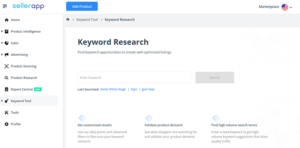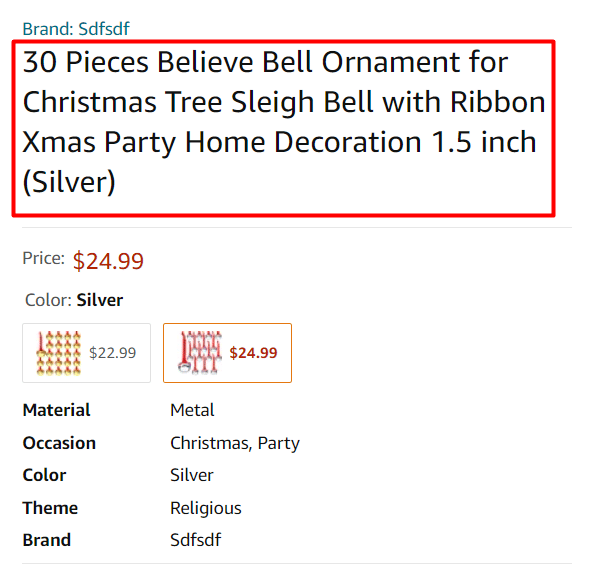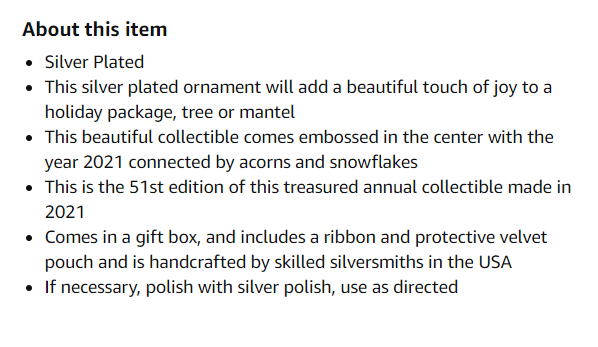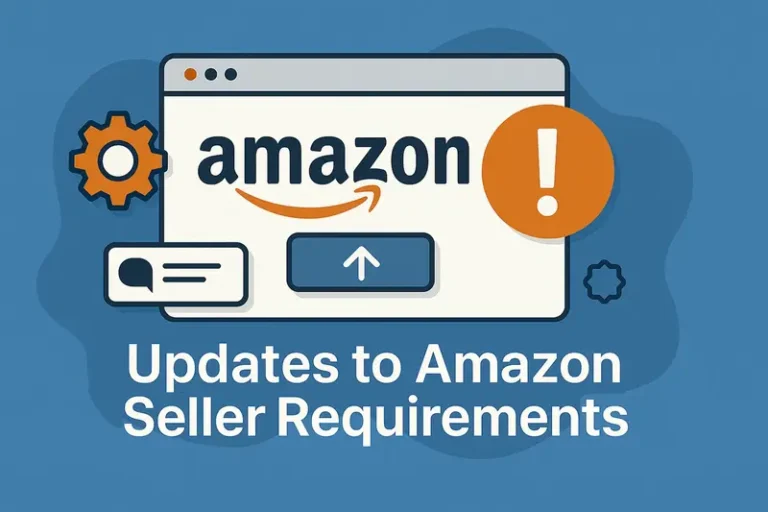Seasonal Keywords to Optimize Your Amazon Product Listings

Last updated on November 8, 2021

Hola, Amazon Sellers! We’ve got some news for you. It is predicted that the 2021 holiday season is going to witness eCommerce sales of $206.88 billion with a rise of 11.3% in the US.
With the holiday season knocking at our doors, Amazon sellers are putting their best foot forward in optimizing their listings for grand traffic, massive sales, and greater profits.
If you want to reap the benefits of this holiday shopping season, then there is no better time than this! But how can you stand out in such a fiercely competitive environment?
For Amazon sellers, a winning holiday keyword strategy is one of the best ways to improve their listings’ discoverability. By investing early in seasonal keyword optimization, you can acquire high positions in SERPs ahead of the competition and increase traffic and sales exponentially.
So, are you ready for the revolutionary 2021 Amazon holiday shopping sales? Let’s make the seasonal keyword optimization magic happen with some powerful seller moves. But before we unveil some of the best Amazon keyword practices, let’s understand the fundamentals of Amazon SEO and how it works.
What is Amazon SEO?
The first page of Amazon’s SERP is one of the most coveted pieces for every seller. It has the power to convert one-time page visitors to buyers and bring about a stunning increase in overall profits.
Like Google, Amazon analyzes the search results through its algorithm, which again includes several factors like –
- Product Title with high-converting keywords
- Product Description with relevant keywords
- Product Features with clear bullet points
- Appealing Product Images
- Good Ratings and Reviews
- Competitive Product Price
The underlying search engine is known as A9. The algorithm deploys several parameters to engineer the relevancy of millions of listings stored in its database with the search terms used by the shoppers.
Behind closed doors, Amazon’s search engine algorithm – A9 is constantly being renewed and refined. Although no one really knows its formula or how exactly it works, there are some widely known factors that influence it.
What is A9?
A9 is Amazon’s product ranking algorithm which provides the results depending on the terms or keywords or queries added by users in Amazon’s search box. The results displayed are catalyzed by the shopper’s preferences, past orders, and keyword matches.
How does A9 work?
The A9 algorithm selects the product listings to be displayed to potential buyers and their rankings based on some criteria like:
- Relevant keywords added in listings that match with customer search queries
- Previous customer preferences and behavior
- Customers’ past purchases
While customer preferences and their past purchases aren’t in your hands, what you can influence is your product’s organic ranking by optimizing your listings and making them SEO-friendly.
Slash Your Fulfillment Costs by Up to 30%
Cut shipping expenses by 30% and boost profit with Cahoot's AI-optimized fulfillment services and modern tech —no overheads and no humans required!
I'm Interested in Saving Time and MoneyWhy Should You Optimize Amazon Keywords for This Holiday Season?
The goal of Amazon’s search engine is to provide customers with the most relevant product results in relation to the search queries they insert. When it comes to product listings, Amazon looks at keywords present in various fields of the listing like title, description, and bullet points. To display products for every time they are searched, Amazon “indexes” these keywords in its database, i.e., collecting, parsing, and storing the search terms.
Therefore, a crucial portion of your Amazon marketing strategy is to ensure that your listings have an optimized Amazon product title, descriptions, and bullet points with high-converting and relevant keywords. This is even more significant to the holiday season as it brings about an exponential increase in traffic as compared to other times.
Your listing should be optimized in a way that A9 can locate it, and it should also be compelling for customers to pay enough attention to your products and brand.
It is recommended that during the holiday season, holiday-based search terms like “gift pop-up cards”, “Christmas gifts”, etc. should be added to your listing content.
Note: When you craft your listing content, make sure it flows naturally. Avoid keyword stuffing, as this diminishes the credibility of your product listing, and drives away potential buyers from your product page to your competitors’ pages.
Tips on Optimizing your Amazon Product Listing with Seasonal Keywords
Here are a few tips and tricks that will help you tackle Amazon’s A9 ranking factors and make your listings holiday season ready in no time:
Step 1: Perform Relevant Keyword Research
Before you begin with keyword research, you should pause and set your goals for your products and brand and why would you want to leverage keywords for your listings.
Do you wish to improve your listing’s search rankings? Are you launching a new product this holiday season? Are you trying to compete with existing sellers selling seasonal products?
Once you define your goals, your keyword research task gets way easier than it actually is.
Generally, you want to add those keywords to your listings that are more specific and searched for the most by shoppers. For instance, listing Christmas bells as “bells” in your product title will likely have a negative impact on where your product appears in the SERPs as it will attract a lot of irrelevant traffic who aren’t even searching for Christmas bells.
Since long-tail search terms are considered more effective, you must incorporate long-tail keywords into your product listings to optimize for Amazon’s SERPs.
Another efficient strategy is to implement the next-to-highest ranking Amazon keywords for your listings. Small-scale third-party Amazon sellers launching new holiday/seasonal products can face overwhelming competition for the top keywords.
In such cases, optimizing a listing for the keyword “Christmas bell” and expecting to land at the top of Amazon’s SERP is not favorable. Therefore, it’s a good idea to opt for a more specific long-tail keyword like “Christmas Tree Decoration Bells”.
Top Seasonal Keywords
Here is a list of the best seasonal keywords collected by us that you may use for your product listing content:
- Gifts for Men
- Gifts for Women
- Christmas Decorations
- Christmas Socks
- Kids Halloween gifts
- Jazz Christmas
- Halloween Gifts Adults
- Thanksgiving Candies
- Cyber Monday Deals
- Toys Black Friday Deals
- Christmas Gifts
- Classical Christmas
How to Perform Keyword Research?
There are several third-party Amazon seller tools for performing keyword research that uses AI and ML technology to provide the most accurate data.
One such tool is SellerApp’s keyword research tool that analyzes thousands of data points to offer high-converting keywords for every seller type. The following are the SellerApp features that analyze keywords in a more innovative way –

- Product Keyword: Get the best keywords, their relevance score, monthly search volumes and cost-per-click, to increase your listing desirability and discoverability.
- Reverse ASIN lookup: Compare your product to the competition and learn from their keyword strategies. Search any ASIN and see which keywords are ranking for that listing.
- Index checker: Check if your backend search terms entered in Seller Central are indexed or not. Optimize your product discoverability as per Amazon’s best practices.
- Keyword Tracker: View real-time keyword ranking position, change in their position, indexed products, and data-driven recommendations to improve Amazon listing SEO.
- Keyword Booster: This tool will show you all the optimal keywords for your product. Here, you can find and sort keywords based on their frequency. Copy and paste your keyword list into the Keyword Booster. Filter your keyword results by the variety of duplication filters, remove unwanted words and characters. Copy the cleaned keyword list from the Keyword Booster with the copy button and paste the optimized keyword list on your Amazon product info page.
Step 2: Make Your Product Title SEO-Friendly
Product Title is one of the most crucial factors that have the power to exponentially boost your product’s visibility and rankings. Make sure that you add all the relevant information in your title and craft a catchy product title.
According to Amazon, a product title should include the following:
- Brand
- Product
- Material
- Quantity
- Color
Note: A product title in the Amazon search is limited to 100 characters only. Therefore, use the space in a rightful manner – do not overstuff it with keywords, keep it appealing and simple.
Amazon has provided guidelines on how to craft good product titles. Your product title should include product information such as brand, product line, color, size, material or key feature, and packaging or quantity. Here, you must also include 1-2 relevant keywords that can influence product conversion and click-through rates.
If you are selling seasonal products, make sure to include holiday special keywords in your product title to get more visibility.

Ensure that the initial 5-6 words of the title are clear, crisp, and intelligible. These simple techniques make the title eye-catching as well as optimize it for the Amazon search.
Step 3: Optimize the Bullet Points
Amazon provides slots for adding bullet points that explain your products in a clear and concise manner to shoppers. Bullet points are found under any parent/child ASINs on the listing page.
They are usually paid more attention than the actual product description. Therefore, you should leverage this space to explain all the compelling features and benefits your product has.
In this section, add secondary keywords that are important but may not fit in the title, for example, keywords that are seasonal and resonate with the upcoming holiday/festivities. There is no need to repeat keywords from the title or other sections.

Simply use high-converting keywords throughout your product listings that you have gathered from your keyword research.
It is estimated that Amazon will index the first 1,000 bytes for your bullet points. Therefore, you must make sure that your bullet points should be 200 bytes max for them to be indexed.
Step 4: Craft a Product Description that Converts
Amazon’s A9 algorithm will prioritize those listings that have the power to convert and have made a considerable amount of sales in the past. Therefore, your product description should be crafted in a way that adds value to your listing and unveils its lucrative benefits, rather than just being informational.
Add in only the most relevant keywords that pertain to your product’s unique features, its type and texture, and overall utility.
The product description is also an ideal way to portray your brand and its vision, attract the target audience, and focus on the problem-solution framework. The character length of your description should be 2,000 characters, including spaces. Remember to make it short and crisp and not a huge chunk of complex texts.
Step 5: Do Not Forget the Backend Keywords
Amazon also offers sellers the opportunity to add hidden search terms, which are called “backend keywords.”
Although not visible, these keywords constitute the backbone of your listing’s rankings on Amazon SERP.
You can get up to 249 bytes for adding other very relevant keywords for your product that weren’t fit to be added into your listing content visible to customers like title, description, and bullet points. The best part about this section is that here, you can include –
- other high-ranking long-tail keywords,
- holiday-related keywords like “gift ideas”, “gift pop up cards”,
- misspellings that are searched the most by customers,
- synonyms that shoppers might look for,
- translation words of your products in Spanish or French or any other language.
Here, you don’t need to add product identifiers, like your brand or product name, or content that is irrelevant or repetitive.
Looking for a New 3PL? Start with this Free RFP Template
Cut weeks off your selection process. Avoid pitfalls. Get the only 3PL RFP checklist built for ecommerce brands, absolutely free.
Get My Free 3PL RFPFinal Thoughts
If you stay proactive and prepare well for the 2021 holiday season, nobody can cease your progress. For even the most advanced Amazon sellers, optimizing keywords takes immense effort, time, and analyzing capabilities. Even though it all seems too overwhelming in the beginning, it can be streamlined with the right AI-powered Amazon keyword tool.
The truth is the more you can streamline the seasonal touch points across your Amazon business, the easier it will be to attract relevant traffic and scale-up.
We hope that this step-by-step guide benefits your Amazon business and fuels your seller journey to success. If you have any more questions, get in touch with us!

Author Bio – Arishekar N
Arishekar N, Director of Marketing & Growth at SellerApp, is a specialist in digital marketing, in addition to website keyword optimization for search engines. His areas of expertise include enhancing the organic & paid ranking of webpages on search engines with innovative SEO & SEM strategies and online promotions.
LinkedIn: https://www.linkedin.com/in/arishekar/

Turn Returns Into New Revenue


 11 minutes
11 minutes

